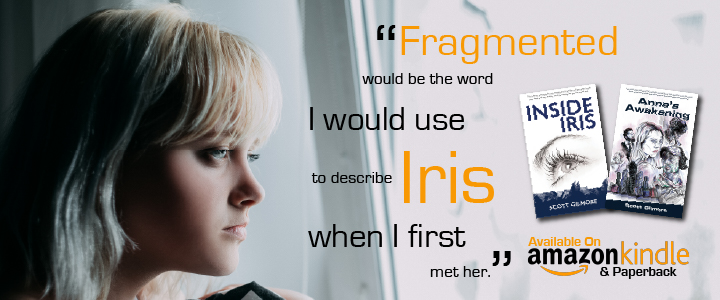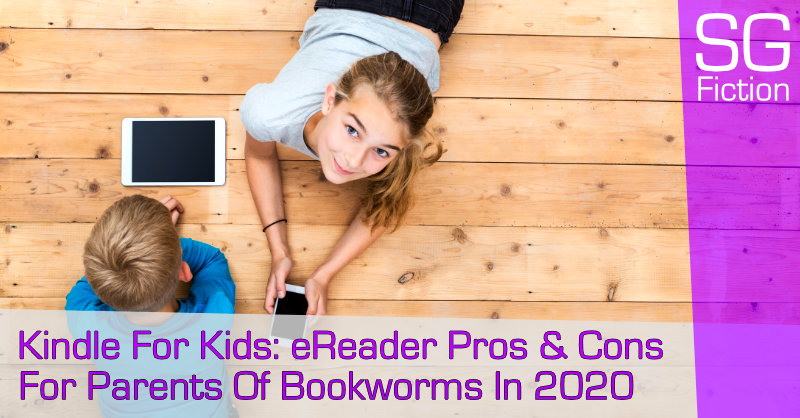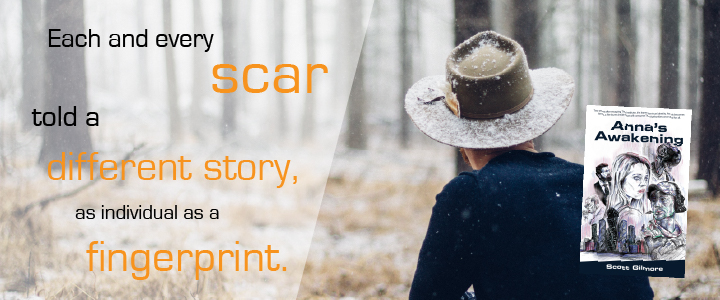Kindle for kids can be an excellent addition to supplement home reading. Here are the pros & cons of eReaders for parents of little bookworms in 2020.
In this Kindle For Kids article, you will find advice in these areas:
- Parental worries over reading and how Kindle devices or app downloads can help boost a child’s reading ability,
- How Kindles can help parents introduce technology into reading, especially to help reluctant readers,
- Kindle subscriptions for kids can allow access to thousands of books with parental controls to assist at home,
- Parental worries about eReaders and their children’s excessive screen time. Here, there is additional guidance from sources like the NHS, New York Times and BBC for parents who are looking for further information.
Read the rest of the Kindle for Kids article to learn how a Kindle eReader or Kindle App download can help boost reading at home.
The purchase of a Kindle for kids can be an excellent addition to supplement reading at home. The chances of eReaders replacing traditionally printed books are slim but, the point is, they don’t need to. For parents of bookworms and children with learning difficulties, they can seriously bolster how much children are reading at home.
As a fiction author, I am keen for children and adults alike to read and read as much as possible. Being a literacy and ICT specialist within UK primary education, I am someone who loves how the world of fiction books, poetry collections and live drama can seriously impact upon and inspire the lives of young people. I have also witnessed the impact that Literacy has when married up appropriately with technology or ICT. By strategically linking books and ICT, a teacher can turn a reluctant reader into a child who has a thirst for reading and, more importantly, lifelong learning.
Whether you are a parent looking for free ebooks for children at home or considering a Kindle for kids who are costing you a fortune in new books, eReaders can seriously help keep little ones reading. Throughout extended periods of time at home, children are often looking for things to do and, if they love reading, there is nothing better than curling up with a good book.
Within this article, I will look to list a number of positives and negatives for those looking to purchase a Kindle for kids at home. As a teaching professional, I will also look at the educational benefits of such devices as well as some of the negatives that parents have shared with me throughout my career. By the end of this article, you should have a better idea as to whether an eReader is a sound investment for your home and the little bookworms within it.
Parental Worries Over Reading
When I was a full-time teacher, I remember having parents asking me about the possibility of engaging their children with reading through electronic alternatives. Usually, these came in the parent-teacher interview when I started to share how child A could develop their reading ability by reading every night at home.
Usually, the parent’s eyes would roll as a sigh was expelled from within, and they would reply with a reply about how child A wasn’t interested in reading. The mothers would then tend to get emotional about how they couldn’t understand how their love of reading wasn’t passed on to their little one. The fathers would tend to attempt to laugh it off, somewhat uncomfortably, and say how child A was just like him when he was younger.
Ultimately, the parents of children want the best for their children. It’s natural. As someone who has conducted thousands of parent-teacher interviews, I can comfortably say that a parent’s worry over a child’s ability in or enjoyment of reading is the number-one issue that I was asked about.
Deep down, the vast majority of people link a child’s ability to read with their intelligence and it can cause a lot of anxiety with parents if their little one does struggle with reading and/or Literacy. Yet, as a teacher, I would always try to point out that there are other forms of ‘intelligence’ and, just because their child hadn’t grasped a love for reading as yet, it wasn’t the end of the world.
Yes, there are children and young people out there with Literacy difficulties. There are some who may have issues that require intervention from a specialised educational professional. However, there are those where a Kindle for kids could be the gateway to a magical world just on the horizon.

How Kindle For Kids Can Help Parents
When sharing advice to some of the parents I referred to above, I would direct them to a eReaders as a way to support reading at home, both independently and as a shared reading activity. This would give child A, who had previously struggled to read independently, a sense of independence as they went to an area and listened to the book being read to them by the electronic assistant. This is an invaluable tool for children with Special Educational Needs.
By using such a helpful tool, the parent would feel less under-pressure in a busy household as the child read along with or listened to a few pages of a book being read to them from the Kindle or iPad. With the availability of Kindle apps that can be downloaded onto competitors’ devices, it gives parents access to the world’s largest bookstore with ease.
A further advantage of Kindle for kids is the fact that the majority of reluctant readers are boys and, no matter what, some boys find reading traditional books ‘uncool’. As a male who has always loved reading, and now writing fiction books, I would try my utmost to appeal to some boys in my classes with little joy. Yet, once the Accelerated Reader programme came into the school, 90% of the boys leapt on-board and I was overjoyed.
Why was this? It was because the children got to use an iPad for a comprehension test. That was it! The children enjoyed the targets set by the Star Reading Test and they enjoyed scoring points based on the difficulty of the book, but the fact that child A got to use an iPad for official schoolwork was golden.
Technology has a hook with young people, especially boys. Therefore, buying a Kindle for kids who have something of a barrier in relation to reading could help engage them that little bit more.
Another bonus with having technology to support or store reading is the fact that teenagers are attached to their mobiles so often that a Kindle app could allow them to bring their books on the journey to school. The school I taught in was in the countryside and many of the children had to travel to go to their secondary or grammar school. The forty-five-minute journey to Belfast would give those teenagers ample time to read a Kindle book as the bus made its way slowly through the traffic.
There are lots of reasons why parents could buy a Kindle for kids at home. between support for children with Literacy difficulties to providing a mobile library for teenagers, a Kindle or Kindle app download onto an iPhone or Android mobile phone could help develop your child’s reading.
Kindle Unlimited For Kids: Free Books For Children?
When we search the Amazon Kindle eBooks Store for titles, we soon see how many of the titles are available on Amazon FreeTime Unlimited (or Amazon Fire For Kids Unlimited in the UK) – a subscription service to download books for a monthly fee. For the parents of a little bookworm, this could be the answer to keep your child reading with thousands of titles at their fingertips.
By setting up a Kindle for kids with your Amazon account, you can give them access to the many titles available on Amazon. This is the more convenient option compared to giving the child their own account, unless they are old enough and have a payment method of their own.
As with all online devices, the designated Kindle ought to be set up with parental controls enabled. This is vital to ensure that key functions, like the internet, Cloud and Kindle Store are kept locked under parental password protection to ensure your child is kept safe online. By shutting each of these options off, the child will only have access to the content you allow onto the device. This is the preferred option for parents of younger children but, with teenagers, you can decide to relax some of the parental controls as necessary.
The bonus of Amazon subscription services (linked above) is that children who are avid readers will likely churn through books in a matter of days, if not hours. Therefore, a family could quickly run up a hefty bill in eBooks in no time. With the subscription service, a child can read multiple titles and it won’t cost you more than the fee of the subscription option you choose.
With the subscription services, there are a number of content, which does contain videos and games. This may mean that a parent has to supervise ‘Kindle Time’ and ensure that time set aside for reading is designated to that purpose alone. We all know a child will switch to a game or video in a fraction of a second if given the chance.
Amazon also include a Parent Dashboard. This is an excellent feature for parents who want to track their child’s progress, set time limits, block access to specific features, and set age filters that can tailor the Kindle experience for each child. This means the parent is in control of the majority of their child’s experience with a Kindle for kids when using the subscription services linked above.
Why Parents Worry About eReaders
As with everything in life, where there are positives, there are also negatives. Yes, a Kindle for kids who love reading can help extend their ability and eReaders can also help those who have Literacy difficulties, but the issue of excess screen time is one that parents endlessly battle at home.
There is no doubt that the most significant issue at homes of young boys and teenage boys is that of gaming and screen time. Whether a child is playing Playstation, Nintendo Switch or simply on social media via a smartphone, parents face an uphill battle to get screens out of a child’s hands.
A valid worry that parents may have concerning Kindle is whether yet another screen, or app download, is really what a child needs. This is true, and I do see the point.
With blue light devices’ screen flicker keeping us awake at night, it could be said that a Kindle for kids at home could exacerbate the issue. However, as we are developing into a more technologically dependent society, how is it possible to completely eradicate such devices and, if required, could an eReader be prioritised ahead of a PS4 or Xbox?
If parents were to decide to buy an eReader or download Kindle app, surely its usage could be included within a child’s screen time allowance. This would allow for the child to have access to a ‘cooler’ way to read as well as getting ti utilise some of the more positive aspects of technology as laid out above.
Ultimately, screen time is a parenting issue that is with us for the long-haul and it will require a lot of discussion between mothers, fathers, and children in order to find a balance. By talking about the use and inclusion of technology within the home is one that will only grow as wearable tech and further smart appliances become the norm.
For further guidance on screen time with children and young people go to:
- The NHS,
- BBC News, and
- The New York Times.
Kindle For Kids: The Takeaway
There is no doubt that buying a Kindle for kids can be something of a minefield. Ultimately, the choice as to whether to make such a purchase for a child is up to the parent.
If you are a techie family with multiple electronic devices in the home already, you would likely think the idea of buying a Kindle for your children was a good idea. With thousands of books at their fingertips on subscription services, like Kindle Unlimited, your little bookworms have a near-limitless supply of eBooks to munch through.
On the other hand, as a family with a traditional mindset, you may be more inclined to prefer the ‘feel of a book’ to the technological equivalent. You may also view screen time as an ever-infringing enemy that is usurping your child’s consciousness as well as their free-time.
As an experienced teacher, I have seen the positives and negatives of both sides of this argument. There is no doubt that parents have repeatedly spoken to me about their worries in relation to a child’s level’s of screen time. Yet, there is no doubt that a reluctant reader can have an entire world opened up to them when they find they enjoy books for the first time.
Is a Kindle for kids the right way to go? The choice is yours, mums and dads.
In my view, the most important point to consider is whether your child is reading and if they are enjoying it. If they are reading and have a smile on their face while doing so? Who cares if the pages are made of paper or pixels on a screen?
Let the child choose and give them the key to open up a love of books and reading.



Very good article <3
Thank you so much, Maggie.